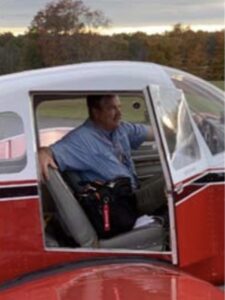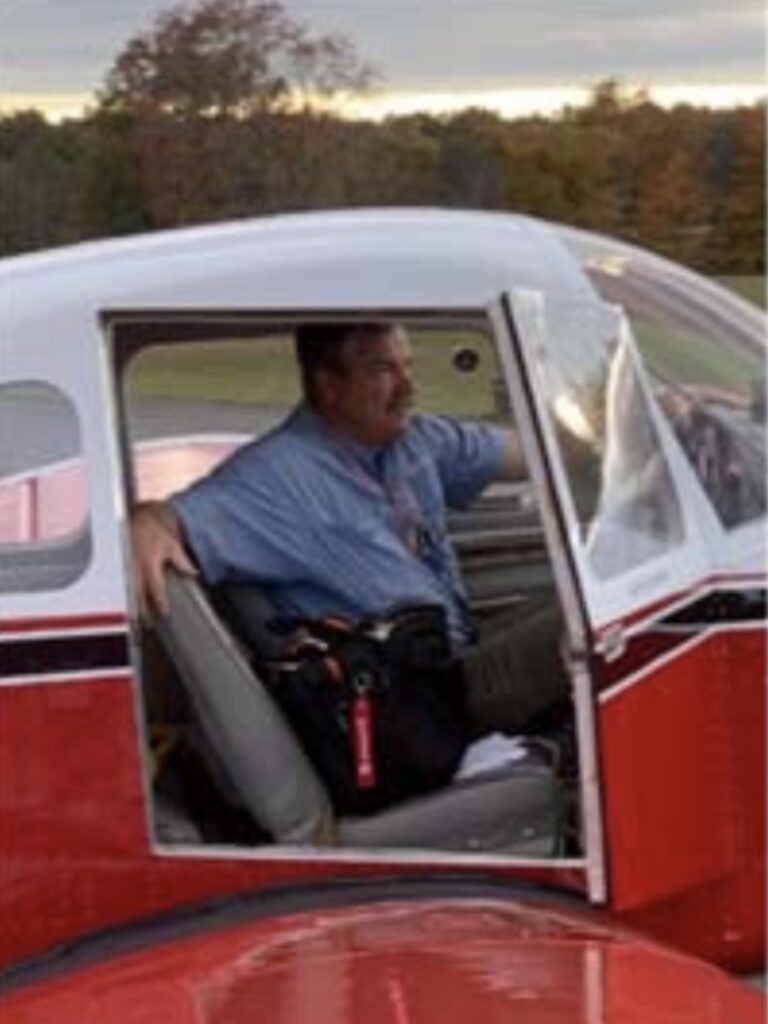
From the President
I’m going to ramble here about aviation safety. Our speaker last month from AOPA, Adam Rarey, presented an accident scenario that I had already seen but was shocked again at the outcome. Basically, two pilots were close to home finishing a long cross-country trip in their new Carbon Cub. They made various decisions as the scenario unfolded and flew VFR into IMC and ended up spiraling into the ground just a few miles from their home destination. Of course, after the fact we can easily identify contributing factors and the subtle mistakes made along the way causing the situation to gradually deteriorate but at some point, before the accident, why didn’t they notice the danger? How did they get too far in?
Over the last several years in General Aviation we’ve learned to use new tools to keep us out of trouble. Before we fly, the IMSAFE (Illness, Medication, Stress, Alcohol, Fatigue, and Eating/Emotion) checklist helps us determine if we are fit to fly (physically, medically, mentally, etc.). Before and during flight the PAVE mnemonic (Pilot, Aircraft, enVironment, and External pressures) helps us identify the risks of the pilot, aircraft, environment and external pressures. The DECIDE model (Detecting a change, Estimating the situation, Choose a course of action, Identify the necessary steps, Do (implementing) the chosen action, and Evaluate the outcome) tells us how to make aeronautical decisions in six steps. With all these tools, why do pilots still get themselves too deep in a bad situation?
Limitations: Have some, know them, apply them. In this scenario, the Carbon Cub is, of course, tandem seating so only the front seat pilot can see the instrument panel. Although the front seat pilot had an instrument rating, he received that in another aircraft type and with different instrumentation. A pilot that can comfortably complete an instrument
approach to minimums in a G1000 Skyhawk should have higher personal minimums when in a different aircraft, especially a non-IFR aircraft. I would guess that trying to remain VFR just a couple feet under a low overcast with rising terrain ahead would not be within anyone’s personal limitations. Limitations and minimums apply to much more than just weather. What is the lowest cruising altitude you are willing to use? Is it the same at night? Is it the same over rough terrain? How many hours will you fly in a day? Try this FAA checklist for developing your own personal minimums, https://www.faa.gov/sites/faa.gov/files/2022-01/Personal-Minimums.pdf
Plan B: Always have an out. The climb and confess to ATC option is not a good option unless the pilot and airplane are IFR capable. The 180° turn before getting in the clouds may be a good out but as we learned here, once in IMC, that does not always work out well, especially in a less familiar aircraft. When things aren’t going as planned, we need to keep an eye on our options. Before our outs have been whittled away, we need to act. Do you plan to land with enough fuel to go elsewhere in case the runway is closed with a disabled aircraft? Or in case Unicom tells you their fuel pump just broke?
Who’s in charge? It is clear cut in an operation requiring more than one pilot, airlines, military, etc. Good CRM (Cockpit Resource Management) says the Captain will solicit input from the Co-pilot and the Co-pilot will assert input, when necessary, but one has the final say. In some flight training situations, it is also quite clear, the CFI is in charge and the student pilot is there to learn. In many GA situations though it can be less clear. In the above scenario the pilot in the back seat had many more years and hours of flying while the one in the front seat with instrumentation had less experience but did have an instrument rating. It was eerie watching the scenario develop when they switched seats for the last leg. I had the feeling the younger less experienced pilot at the controls was hoping the experienced pilot in the back would bail them out of trouble if needed and the experienced pilot in the back was hoping the instrument ticket holder in the front seat could keep them out of trouble. There should always be a clear delineation of duties and responsibilities. Clearly brief who will do what when there is more than one of you.
On a different note, I recently flew with a member that was due for a flight review. We used the new option under FAR 61.56(e). The FAA has added a new twist to getting your Flight Review. The FAA and industry do not want pilots to wait two years for their flight review due date and then fly one hour with a CFI and be done. FAR 61.56(e) allows you to substitute an FAA Wings phase for a flight review. Sure, that is more flying but is much more comprehensive. It is simple. Complete a Wings phase by earning three Wings knowledge credits by attending any three approved on-line or in-person Wings classes (You can earn two on April 22 at the IMC and VMC Safety meetings!) and flying three of the Wings flight activities appropriate to your certificate. Get more info here: https://www.faasafety.gov/login/
Blue Skies,
Bob Prange










